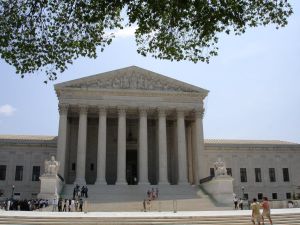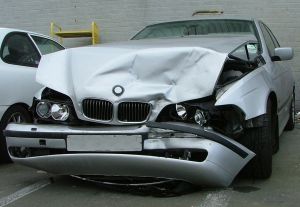 Experienced personal injury attorneys consider many factors in judging how to manage their cases. While common elements are present from case to case, no two cases are ever completely alike. Both subjective and objective considerations must be taken into account to reach decisions most beneficial to client and attorney alike. The decisions are always consequential. The best personal injury attorneys are the best decision makers.
Experienced personal injury attorneys consider many factors in judging how to manage their cases. While common elements are present from case to case, no two cases are ever completely alike. Both subjective and objective considerations must be taken into account to reach decisions most beneficial to client and attorney alike. The decisions are always consequential. The best personal injury attorneys are the best decision makers.
The elements influence everything from: whether the law firm accepts a case; whether a lawsuit will be filed versus simply trying to resolve the case pre-suit; settlement amount; whether to go to trial; whether the case is declined after it has been accepted by the law firm. Since every case has many moving parts, these and other case management decisions are adjusted frequently.
COMMON CONSIDERATIONS
Insurance coverage. There are many different types of liability insurance to cover for losses caused by negligence. The more common are homeowners, premises liability, bodily injury (BI), and medical malpractice. Most individuals and businesses with sizable unprotected assets have strong liability insurance coverage. A fair percentage with weaker financial positions have coverage, although usually with lower policy limits. Some have no coverage at all. The state of Florida has few requirements for maintaining liability insurance. (One exception is for tractor trailers/18-wheelers. The owner is required to maintain $750,000 in coverage. Unfortunately, laws are often violated, including as to maintaining insurance. Surprisingly, doctors are not required to maintain malpractice insurance.) It is mostly left as a personal choice. No matter how significant the damages, no financial means plus no insurance usually means no recovery. Few lawyers will accept a case under these circumstances. Coverage that is available but limited under the circumstances can influence a lawyer’s decision to take the case, or how hard and far to push it.
Negligence. Florida operates a fault-based civil liability system. (The workers’ compensation system, covered in Chapter 440 of the Florida Statutes, is not fault-based. Benefits, rather than damages, are recoverable under Chapter 440. These benefits are much different than the damages recoverable under the civil liability system.) Only conduct which falls below a reasonable standard is punished. Fault can be shared by various individuals and entities, including the aggrieved party. This is the concept of comparative fault. Fault can be clear, it can be gross, it can be illusive. These fault considerations (and more) influence the course and outcome of every negligence case. Fault must be proved by the aggrieved party to recover damages (e.g., medical bills, lost wages, pain and suffering).
Injuries. Other factors aside, the worth of any personal injury case is always capped by the extent of the injuries. Put another way, an accident without injuries is an accident without value. Individuals can be compensated for the aggravation of pre-existing injuries. See Florida Standard Jury Instruction 501.5(a). This is a frequent battleground issue. Our firm is in suit for a woman involved in a slip and fall accident. Within months of the accident, she underwent a 3-level spine fusion surgery. Because of a relatively minor back surgery 7 years before and some evidence of normal preexisting degeneration, the Defendant is trying to avoid blame for her injuries. It has even hired a notorious insurance company “whore” doctor to support its position. (Mediation is scheduled.)
Medical Treatment. Medical conditions must be documented to be proven. Receiving consistent care from reputable doctors is an important component. Insurance companies know the players, juries are good at recognizing the good and the bad. Delaying the receipt of care or gaps in care make a difference. While there are reasonable explanations for inconsistent care — the most common being the inability to pay — a good personal injury attorney can help make arrangements for timely, steady, and quality care to be provided.
Continue reading
 Florida’s dangerous instrumentality doctrine “imposes strict vicarious liability upon the owner of a motor vehicle who voluntarily entrusts that motor vehicle to an individual whose negligent operation causes damage to another.” Aurbach v. Gallina, 753 So. 2d 60, 62 (Fla. 2000). “Operation of a vehicle falls within the strict liability doctrine because a vehicle is dangerous to others when used for its ‘designed purpose.'” Harding v. Allen-Laux, Inc., 559 So. 2d 107, 108 (Fla. 2d DCA 1990) (quoting Southern Cotton Oil Co. v. Anderson, 80 Fla. 441, 86 So. 629, 638 (Fla. 1920)).
Florida’s dangerous instrumentality doctrine “imposes strict vicarious liability upon the owner of a motor vehicle who voluntarily entrusts that motor vehicle to an individual whose negligent operation causes damage to another.” Aurbach v. Gallina, 753 So. 2d 60, 62 (Fla. 2000). “Operation of a vehicle falls within the strict liability doctrine because a vehicle is dangerous to others when used for its ‘designed purpose.'” Harding v. Allen-Laux, Inc., 559 So. 2d 107, 108 (Fla. 2d DCA 1990) (quoting Southern Cotton Oil Co. v. Anderson, 80 Fla. 441, 86 So. 629, 638 (Fla. 1920)). Florida Injury Attorney Blawg
Florida Injury Attorney Blawg










